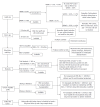Feasibility of using marginal liver grafts in living donor liver transplantation
- PMID: 29930466
- PMCID: PMC6010938
- DOI: 10.3748/wjg.v24.i23.2441
Feasibility of using marginal liver grafts in living donor liver transplantation
Abstract
Liver transplantation (LT) is one of the most effective treatments for end-stage liver disease caused by related risk factors when liver resection is contraindicated. Additionally, despite the decrease in the prevalence of hepatitis B virus (HBV) over the past two decades, the absolute number of HBsAg-positive people has increased, leading to an increase in HBV-related liver cirrhosis and hepatocellular carcinoma. Consequently, a large demand exists for LT. While the wait time for patients on the donor list is, to some degree, shorter due to the development of living donor liver transplantation (LDLT), there is still a shortage of liver grafts. Furthermore, recipients often suffer from emergent conditions, such as liver dysfunction or even hepatic encephalopathy, which can lead to a limited choice in grafts. To expand the pool of available liver grafts, one option is the use of organs that were previously considered "unusable" by many, which are often labeled "marginal" organs. Many previous studies have reported on the possibilities of using marginal grafts in orthotopic LT; however, there is still a lack of discussion on this topic, especially regarding the feasibility of using marginal grafts in LDLT. Therefore, the present review aimed to summarize the feasibility of using marginal liver grafts for LDLT and discuss the possibility of expanding the application of these grafts.
Keywords: ABO-incompatible; Chronic hepatitis; Liver transplant waiting lists; Living donor liver transplantation; Marginal liver grafts; Older donors; Small-for-size grafts; Steatosis.
Conflict of interest statement
Conflict-of-interest statement: All authors declare that there are no conflicts of interest in this article.
Figures
Similar articles
-
Risk factors for hepatitis B virus recurrence after living donor liver transplantation: A 22-year experience at a single center.Biosci Trends. 2021 Jan 23;14(6):443-449. doi: 10.5582/bst.2020.03336. Epub 2020 Nov 25. Biosci Trends. 2021. PMID: 33239499
-
Transplantation of hepatitis B surface antigen-positive livers into hepatitis B virus-positive recipients and the role of hepatitis delta coinfection.Liver Transpl. 2005 Aug;11(8):922-8. doi: 10.1002/lt.20471. Liver Transpl. 2005. PMID: 16035057
-
Long-term recurrence-free survival after liver transplantation from an ABO-incompatible living donor for treatment of hepatocellular carcinoma exceeding Milano criteria in a patient with hepatitis B virus cirrhosis: a case report.Transplant Proc. 2012 Mar;44(2):565-9. doi: 10.1016/j.transproceed.2012.01.029. Transplant Proc. 2012. PMID: 22410070
-
Liver grafts from hepatitis B surface antigen-positive donors: A review of the literature.World J Gastroenterol. 2016 Sep 21;22(35):8010-6. doi: 10.3748/wjg.v22.i35.8010. World J Gastroenterol. 2016. PMID: 27672295 Free PMC article. Review.
-
Future of U.S. living donor liver transplant: Donor and recipient criteria, transplant indications, transplant oncology, liver paired exchange, and non-directed donor graft allocation.Liver Transpl. 2025 Jan 1;31(1):92-104. doi: 10.1097/LVT.0000000000000462. Epub 2024 Aug 23. Liver Transpl. 2025. PMID: 39172018 Review.
Cited by
-
Long-term outcomes of liver transplantation using grafts from donors with active hepatitis B virus replication: a multicenter cohort study.Ann Surg Treat Res. 2023 Apr;104(4):183-194. doi: 10.4174/astr.2023.104.4.183. Epub 2023 Mar 31. Ann Surg Treat Res. 2023. PMID: 37051154 Free PMC article.
-
Evolving Cell-Based and Cell-Free Clinical Strategies for Treating Severe Human Liver Diseases.Cells. 2020 Feb 7;9(2):386. doi: 10.3390/cells9020386. Cells. 2020. PMID: 32046114 Free PMC article. Review.
-
Liver volumetric and anatomic assessment in living donor liver transplantation: The role of modern imaging and artificial intelligence.World J Transplant. 2023 Dec 18;13(6):290-298. doi: 10.5500/wjt.v13.i6.290. World J Transplant. 2023. PMID: 38174151 Free PMC article. Review.
-
Preliminary study of donor volume changes after dual-graft liver transplantation in rats.Front Immunol. 2023 Oct 16;14:1183426. doi: 10.3389/fimmu.2023.1183426. eCollection 2023. Front Immunol. 2023. PMID: 37908343 Free PMC article.
-
Age-related impact on liver regeneration in older donors after living-donor right hepatectomy: a propensity score-matched cohort study.Ann Surg Treat Res. 2025 Jul;109(1):27-34. doi: 10.4174/astr.2025.109.1.27. Epub 2025 Jul 2. Ann Surg Treat Res. 2025. PMID: 40688263 Free PMC article.
References
-
- Fisher RA. Living donor liver transplantation: eliminating the wait for death in end-stage liver disease? Nat Rev Gastroenterol Hepatol. 2017;14:373–382. - PubMed
-
- Makuuchi M, Kawasaki S, Noguchi T, Hashikura Y, Matsunami H, Hayashi K, Harada H, Kakazu T, Takayama T, Kawarasaki H. Donor hepatectomy for living related partial liver transplantation. Surgery. 1993;113:395–402. - PubMed
-
- Makuuchi M, Kawarazaki H, Iwanaka T, Kamada N, Takayama T, Kumon M. Living related liver transplantation. Surg Today. 1992;22:297–300. - PubMed
-
- Routh D, Sharma S, Naidu CS, Rao PP, Sharma AK, Ranjan P. Comparison of outcomes in ideal donor and extended criteria donor in deceased donor liver transplant: a prospective study. Int J Surg. 2014;12:774–777. - PubMed
-
- Nure E, Lirosi MC, Frongillo F, Bianco G, Silvestrini N, Fiorillo C, Sganga G, Agnes S. Overextended Criteria Donors: Experience of an Italian Transplantation Center. Transplant Proc. 2015;47:2102–2105. - PubMed
Publication types
MeSH terms
Substances
LinkOut - more resources
Full Text Sources
Other Literature Sources
Medical
Miscellaneous


